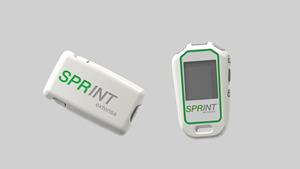The Cleveland-based company’s clearance comes at the same time FDA is upping the ante on in the opioid epidemic, through a collaboration with the National Academies of Sciences, Engineering, and Medicine.
August 22, 2018

The use of neurostimulation could be an effective weapon in the long fight to eliminate the opioid epidemic in the U.S.
FDA just recently signed off on a neurostimulation pain treatment therapy from SPR Therapeutics. The Cleveland-based company said it has received clearance to market the Sprint extensa (dual lead) Peripheral Nerve Stimulation (PNS) System. The company also received clearance for some updated features on its single lead pain treatment application.
“This recent clearance allows now for a dual lead or two lead to be used in the treatment of pain and it allows us to target just more than one nerve,” Maria Bennett, SPR Therapeutics Founder, President and CEO, told MD+DI. “There are some types of pain that require two different nerves to be targeted in order to provide maximum or optimal pain relief.”
SPR Therapeutics said the Sprint PNS System is the only percutaneous device that is FDA-cleared for both chronic and acute pain, including post-operative and post-traumatic pain.
The Sprint PNS System leads are placed by a physician during an outpatient procedure without surgery, incisions, tissue destruction or anesthesia offering a minimally invasive and non-opioid 60-day therapy. The company had originally received FDA clearance for the Sprint PNS System in 2016.
The current nod from FDA comes around the same time the agency awarded a contract to the National Academies of Sciences, Engineering, and Medicine (NASEM) to help advance the development of evidence-based guidelines for appropriate opioid analgesic prescribing for acute pain resulting from specific conditions or procedures.
FDA said the primary scope of the work is to understand what evidence is needed to ensure that all current and future clinical practice guidelines for opioid analgesic prescribing are sufficient, and what research is needed to generate that evidence in a practical and feasible manner.
SPR Therapeutics clearance also comes a few months after FDA challenged innovators to develop medical devices, digital health technologies, and diagnostic tests capable of address in the opioid epidemic.
The number of opioid alternatives has increased over the past years as the market for these devices has grown. Last year, MD+DI named the SPRINT PNS System as one of seven emerging devices that could help curb opioid use in U.S.
Bennett noted that SPR Therapeutics’ technology stands out because it has some advantages over other pain treatments in the market.
“Our technology is a very good alternative because it’s percutaneous in nature,” Bennett said. “It’s a minimally invasive procedure done in an outpatient procedure room and can be done at low-cost. Patients are also committed to it for 60 days vs. dealing with an implantable that they would be committed to for the [rest of their lives.]”
About the Author(s)
You May Also Like




